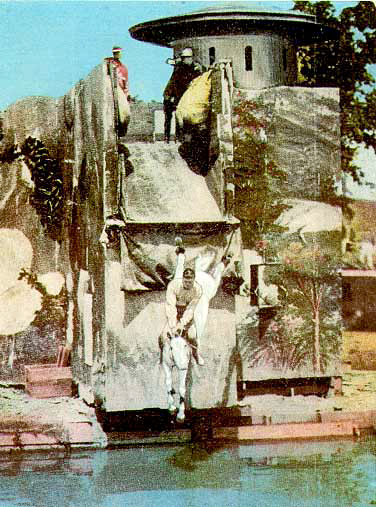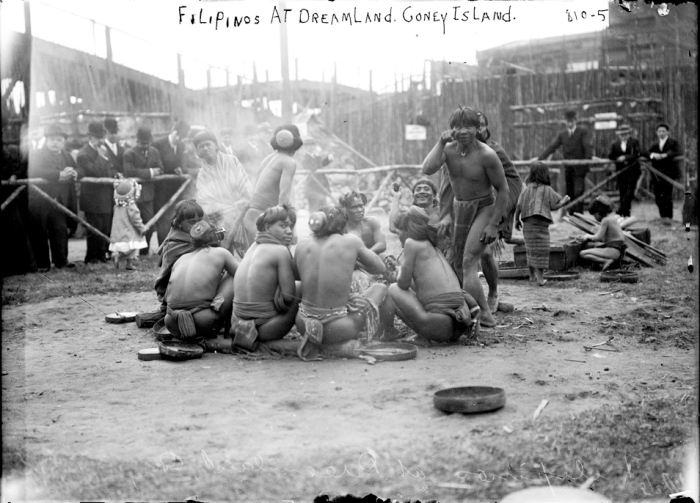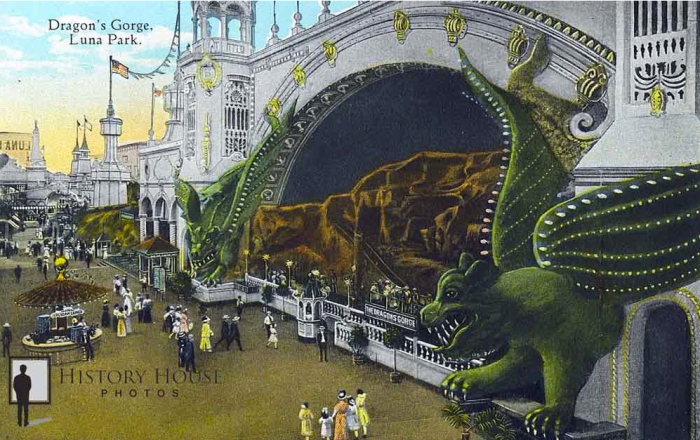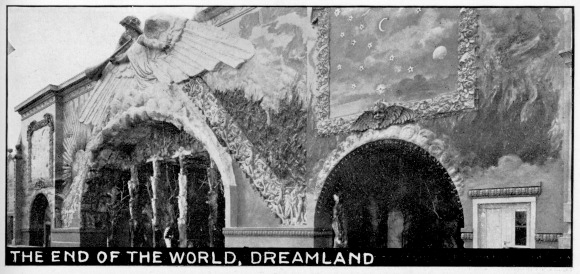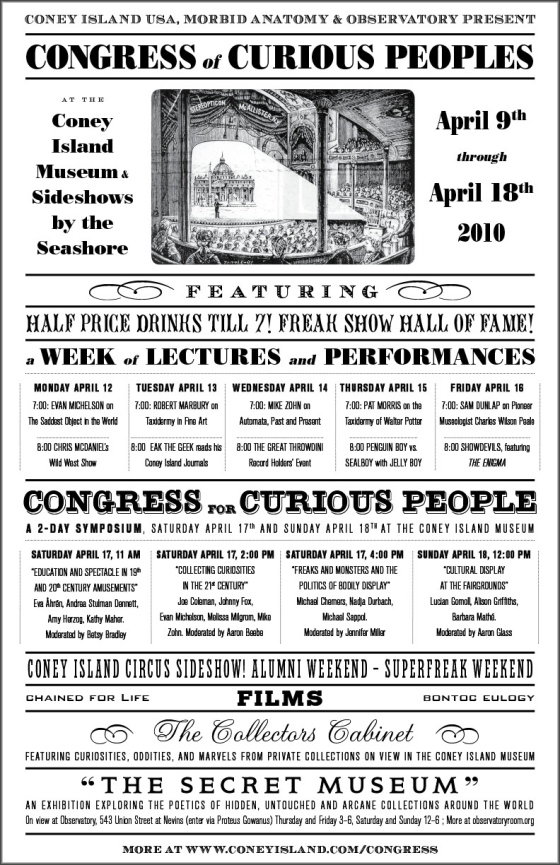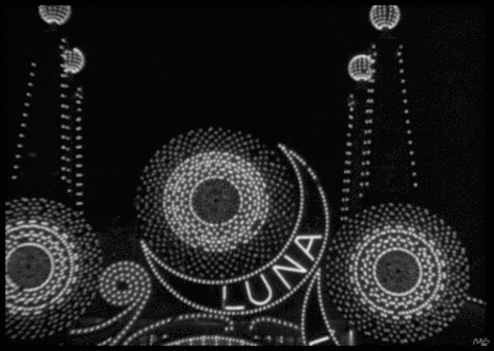The Congress for Curious People – 2013 London Edition
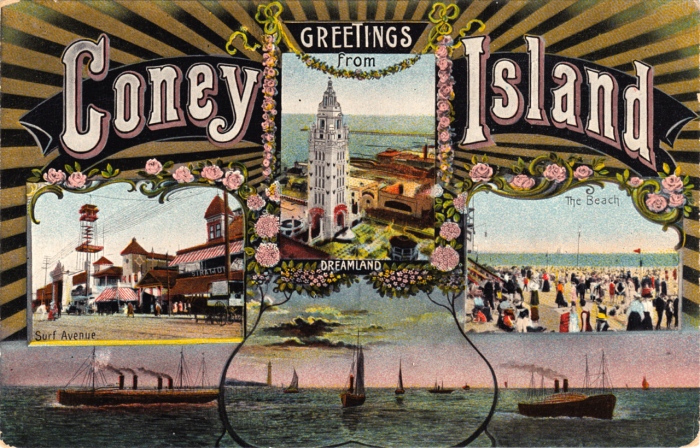
Postcard of Coney Island, published by Theodor Eismann, c. 1908-1911
from the Coney Island Museum collection
We are all familiar with the Coney Island of the collective imagination. A place of hotdogs, roller coasters, and fun. What fewer people know about is the other Coney Island. When it was at its height as an amusement center in the late 19th and early 20th centuries, it was packed with a variety of amusements bizarre to the modern eye. Here are just a few examples:
Pompeii destroyed by a fire-work Vesuvius, complete with costumed chorus girls.

“The Fall of Pompeii” attraction, Coney Island, photograph by Benjamin J. Falk, c.1903, from the Coney Island Museum collection
Lilliputia – a town populated entirely by 300 midgets and modeled on 15th century Nuremberg, with its own opera house, fire department, and vaudeville theatre.
Fighting the Flames, a staged tenement fire (which was, we must remember, a constant danger of everyday life at this time) featuring a cast of 2,000 men, women and children, and which was so popular that it spawned a copycat amusement.
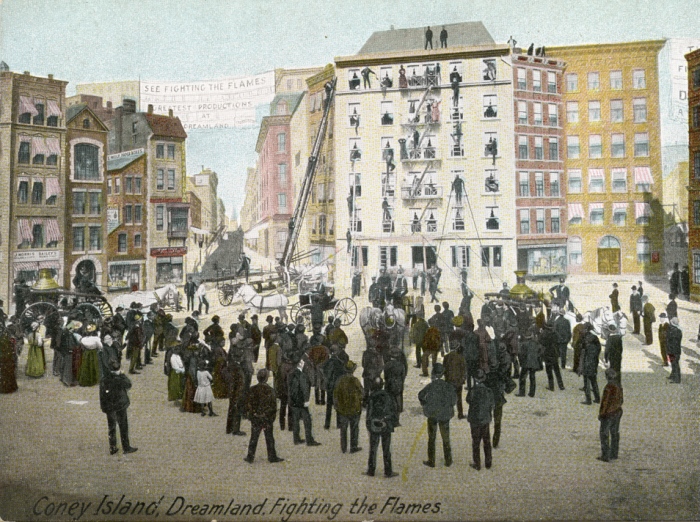
Postcard depicting Fighting the Flames, from the Coney Island Museum collection, early 20th century.
The Infant Incubators, where freakishly tiny premature babies were on display, and were kept alive by a novel technology only later adopted by hospitals.
The Bauer Sisters Candy Delicatessen where you could buy frankfurters, pork sausages and sauerkraut – all made of candy.
A reenactment of the Boer War starring 600 genuine Boer War veterans .
Immersive dramatizations of disasters such as The Galveston Flood, a major disaster which had killed 6,000 people only two years before the amusement premiered, or the San Francisco Earthquake, which opened to the public – in this time before You Tube or television – less than one year after the actual event had taken place.
You could also visit a Bontac Village where genuine head-hunting Bontac tribesmen went about their native traditions in a reproduction village;
or Dragonʼs Gorge, an indoor scenic railway which brought you to The River Sty, Hades, the North Pole, Africa, and the Grand Canyon.
Or take in the apocolypse in immersive amusement form.
Or, my favorite attraction, Night and Morninng, which was described by the 1907 New York Times like this:
The first room into which the people enter is like a big coffin with a glass top and the lid off. You look up through the roof and see the graveyard flowers and the weeping willows and other such atmospheric things. When everything is ready the coffin is lowered into the ground. It shivers and shakes, and when it tips up on end you hear a voice above give a warning to be careful. Then the lid is closed and you hear the thud of the dirt.
The man who is conducting the party now announces that they must have a spirit to guide them. A subject is put into a small coffin and in an instant he is transformed into a skeleton. Then a real skeleton appears and delivers a solemn lecture in which he tells the people that they must ‘leave all hope on the outside’–a gentle perversion of the old ‘abandon hope all ye who enter here.’ … Now there is a great clanking of chains and the side of the coffin comes out and visitors pass down into the mysterious caverns. First they see a twentieth century idea of Hell, with monopolists frying in pans and janitors fastened to hot radiators…. After the modern Hell the people come to the Chamber of Skeletons. Though these skeletons haven’t a stitch of clothes on them, they smoke cigarettes most unconcernedly all the time just like live men…. Next you come to the panorama of Hell, where you see a vision of all the condemned spirits being washed down by the River of Death. Now comes the big change and you find yourself in a large ordinary room, with cathedral-like windows through which you can look outside and see the graveyard which looms up with a weird effect. Like great mist you can see the spirits rising from the graves and ascending to Heaven…
The great transformation now takes place. The whole grave yard floats off into space with the single exception of an immense cross, where the form of a young girl is seen clinging to the Rock of Ages. Fountains foam with all their prismatic colors, and the air is filled with troops of circling angels. The room itself vanishes and you find yourself in a bower of flowers under a blue sky. At the climax and angel comes down with a halo which she places on the head of the girl who is still clinging to the cross. Then all that vanishes and you are within four blank walls once more.”
Where did these amusements come from? Why had they been forgotten? Where did they fit into the history of cinema, the medium which began as just another fairground novelty and ended up rendering these spectacles obsolete?
The desire to explore and workshop these questions launched The first Congress for Curious Peoples in 2010, a scholarly yet accessible 10-day series of events and performances tacked onto Coney Island USA’s Congress of Curious Peoples.
And the exhibition ‘The Great Coney Island Spectacularium’, which explored the same concepts.





